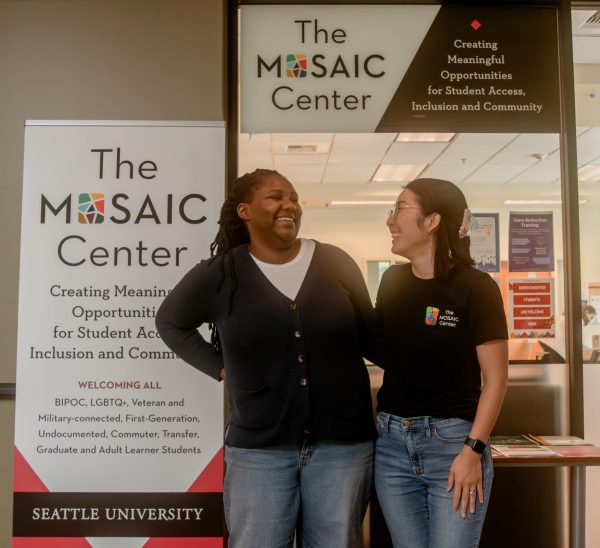“iPad Kids” are Shaping the Future of Education
Over the past decade, it has become increasingly common for technology to be introduced into people’s lives at a younger age. For younger children, screen time can sometimes be used as a comfort in times of distress, or sometimes to distract them through games or education materials. The increase of technology use in youth has not only been visible in personal or public spaces, but has also impacted the education system.
Upon release of iPads in 2010, parents immediately began giving them to their children with intentions of using these devices as distractions or entertainment. A 2011 study found that 39% of 2-4 year olds have direct access to digital media—just a year after the iPad’s inception. From 2011 to 2013, the percentage of children under eight that were using digital media increased from 38% to 72%. A 2019 review by NPR found that over half of children have a smartphone by the age of 11.
The term “iPad kid” was coined by users on Tiktok, describing a young child who is always glued to their iPad or other smart device. “iPad kids” have initiated conversations regarding how technology should be used in a classroom setting, as students in many schools can be seen constantly on devices. The impact technology has on the younger generation has been magnified by the COVID-19 pandemic, as direct education also shifted online.
The changes in technology usage visible today are becoming more prominent in social situations and education systems. Generation Z students, like Fourth-year Criminal Justice major at Seattle University Jennifer Huffman, have noticed the impact of “iPad kids” around them compared to their own adolescent years.
“Growing up, we didn’t have devices like tablets and iPhones. When I remember playing as a kid, I was always coloring, going outside or riding my bike around the neighborhood—not looking at a screen,” Huffman said.
Some in Generation Z have frowned upon the idea of raising their own children as “iPad kids” after witnessing recent hyper fixation with technology. First-year Diagnostic Ultrasound student Shauna Larsen explained how she would feel about integrating technology into her child’s life at a young age.
“I feel like to a certain extent, I don’t see a problem with my child using technology at an early age. But at the same time, I wouldn’t want them being glued to an iPad screen,” Larsen said.
Schools have begun utilizing technological resources as early as preschool for some students. A CNBC report describes the move of digital media companies to the classroom over ten years ago — and the role of technology has only increased since. With the convenience and ease that comes with modern day devices, it isn’t rare to see toddlers consume educational media through technology. Today, UNICEF estimates that one in every four preschool-aged children has a digital device. The link between technology and education deepend even further during COVID-19 related lockdowns.
During the COVID-19 pandemic, schools mainly resorted to virtual education. The most popular application to facilitate learning online was Zoom, allowing students and professors to see each other through virtual calls. At the beginning of this transition, students and teachers alike weren’t accustomed to the new adjustment. First-year biology student Jaidyn Duhon felt some relief with being online during the pandemic, but also felt the challenges of technology taking over the classroom.
“The pandemic has taken away the day-to-day interactions we are used to having and has somewhat alleviated the social anxiety I am used to having. Growing up, technology has always been a major part of my life, but when such an emphasis was placed on it during my schooling it became hard for me to focus,” Duhon said. “Looking at a computer screen all day strained my eyes which in turn limited the amount of time I was doing anything other than sleeping.”
During the pandemic, being assigned online work and not having any face-to-face interaction with teachers led many students to struggle with their assignments. When students work on assignments in an online environment, they often lack timely access to their professor or peers for help — something Huffman resonated with.
“During my online, asynchronous classes, I never met with other students or my professor. This made it difficult for me to ask questions or even understand material being taught in the course,” Huffman said.
The pandemic has largely changed the landscape of education. Regardless of technology, the ways students study, learn, retain information and perform in classroom environments has been a contested topic of discussion now that most universities have returned to in person instruction.
A recent example highlighting the changed landscape of academic culture comes from a recent termination of NYU professor, Maitland Jones Jr., who was fired after 82 of his 350 students signed a petition against him, claiming the Organic Chemistry course he instructed was extremely difficult.
The students were dissatisfied with the way things were handled in the classroom, they claimed the course was too difficult and the professor exacerbated these difficulties in many ways, from his allegedly unclear lectures to the minimal amount of extra credit opportunities.
Patrick Schoettmer, a political science professor at Seattle U, believes that professors play a nucanced role in helping students grasp new subjects, regardless of the addition of online tools to the educational context.
“As a member of the faculty, my primary role in the classroom is to be a guide to the material and occasionally a translator. Having someone there who understands the material, can help students have a firmer and deeper grasp of the content,” Schoettmer said.
Technology can lead to challenges in education via distractions, but can also be beneficial to form a relationship between students and educators. Access to devices provides students with a means of learning they may not be able to get in the classroom, as they have access to online modules. Especially if they need extra help, having online education tools can allow them to further their education outside of typical school hours. Second-year biology major Emma Kritsepsis is grateful for the increased use of technology in her education, noting how much it has impacted her learning experiences.
“We are in the age of technology where things are constantly improving, and here at Seattle U, students and teachers should use technology to their greatest advantage,” Kritsepis said.
As social media and technology have become integral to communication, students and educators now have access to new forms of education at their fingertips. With the generation of “iPad kids” being exposed to technology from a very young age, the opportunities for them to learn more from technology is now available — an option that wasn’t available to older generations. First-year business major Nathan Kwan finds himself grateful for the opportunities technology has brought him throughout his education thus far.
“It amazes me how accessible education is through technology these days. It’s the big reason why you see some people skip college and find high-paying jobs. With how easy it is to access lessons on essential math, science and English for virtually free, something you couldn’t do back then, it speaks volumes when you compare it to the prices of college tuition,” Kwan said.
As prices of college tuition have continuously increased, some have found themselves opting out of attending traditional university, as they can find similar forms of education online easily, in some cases as accessible as a cellphone in their pocket.
As technology becomes more prominent in modern times, it leaves many individuals with a dilemma on whether they should continue their education in the classroom. However, for students who do choose to attend college, many have found technology to be a necessity as it is sometimes their only means of accessing homework, lesson plans and other important classroom materials.
As the COVID-19 pandemic has become less severe in many parts of the world, many schools are reopening for face-to-face classes. However, teachers are continuing to utilize Zoom, Canvas and other applications that were essential during the height of the pandemic as a central part of their classes. This provides opportunities for those that cannot attend classes in-person, to still further their education online.
Institutions of higher education have recently gone as far as to require students to purchase a computer before enrolling. Seattle U’s School of Law requires students to buy a laptop through the university, or else possess their own that meets system requirements. Undergraduate institutions are also starting to mandate technology in the classroom. Goucher College, Allen College and Valencia College all list specific requirements for student’s personal computers. Applications like Zoom and Canvas mitigate the blur that comes with virtual schooling, but to run them students need their own smart devices. If a student doesn’t have access to one, they will miss out on significant portions of their education.
As the new generation of children are being exposed to technology at an early age, and schools are becoming more well-versed with technology, the role that devices play in an academic setting will only grow. It’s up to students and professors to integrate them effectively into education.











